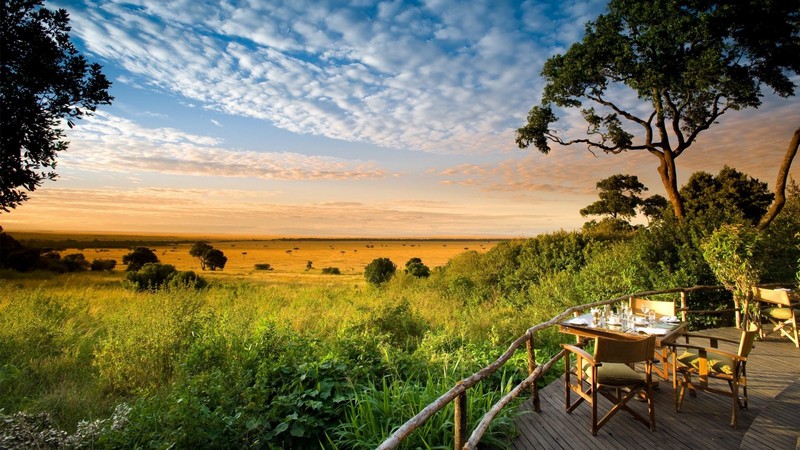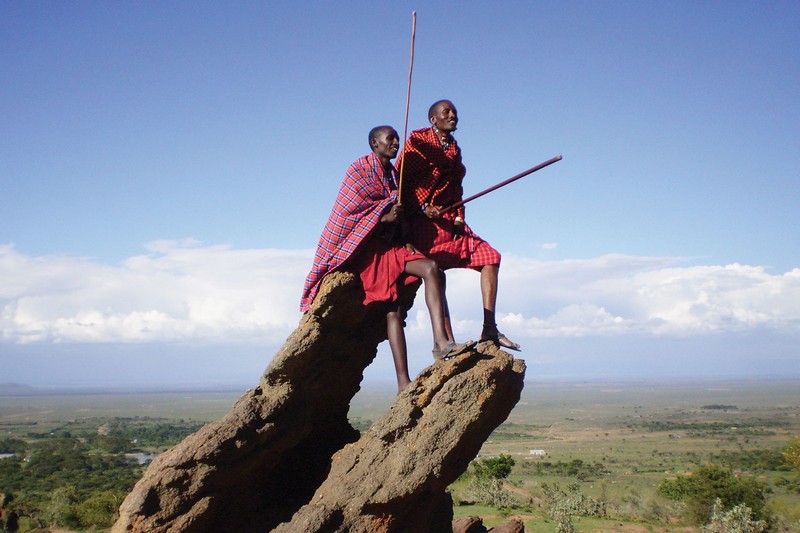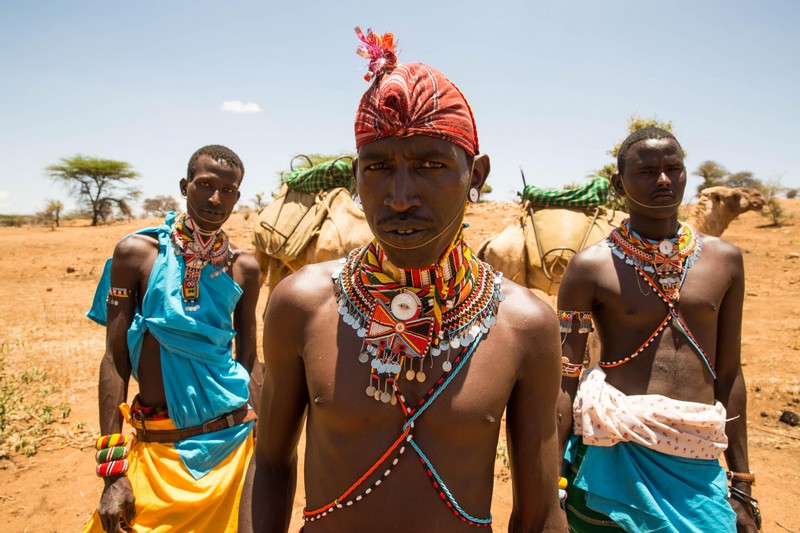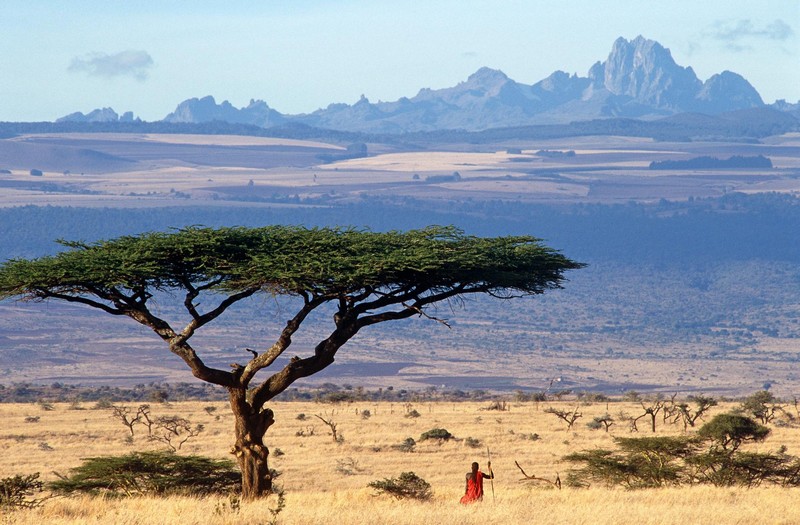(#wanderlusttips #Kenya) Kenya is an East African country on the shores of the Indian Ocean. Visitors are given the opportunity to explore a wild and exotic natural world. The country is a popular travel destination thanks to its rich history, natural wonders, unique geographical features, and abundance of wildlife.
[rpi]The paradise that is the Maasai Mara

The most famous attraction in this African country is the Maasai Mara National Reserve. Located in the Southwest of the country, it is a safe haven for a variety of wild animals. The vast green prairie and the abundant amount of food make it the perfect migration destination.
Africa is home to the best wildlife reserves in the world. The most convenient way to visit them is to book a tour with a tour operator that can take visitors deep into the park where they can witness wild animals in their natural habitat and see spectacles usually only seen on the Discovery Channel and in National Geographic. The most popular tourist season is during the migration season from July to October. On the plains of the Serengeti visitors can witness spectacular scenes of countless zebras, wildebeests, Thompson’s gazelles, and buffalos crossing the Mara river to reach fresh grazing ground. However, being peak season during this time the costs are more expensive, and popular spotting places are crowded, so we decided to visit in February, when the immense Maasai Mara prairie is a lush green, stretching across the horizon. Being nature lovers, we booked a 3-day tour, slept in tents in the reserve, and went on game drives, determined to find the Big Five, the most iconic of the African animals.
We sat inside a specially designed vehicle as it drove among the never-ending savannah, and I felt like I was on the set of “The Gods Must be Crazy”, surrounded by the majestic natural world, witnessing the wildlife right before my eyes. We were in awe as this was the first time we saw a herd of lionesses and their young feeding on a giant buffalo carcass, only a few dozen meters away from our car. The animals followed their instinct, as mother nature intended. The predators hunt their prey, which in turn survives and flourishes on the immense green grass, or feeding on insects. Without humans, their ecosystem could go exist in this way in harmony. I considered the trip to the Maasai Mara quite successful because we encountered all of the Big Five: elephants, leopards, lions, buffalos and rhinos, even if it was from afar as you cannot directly approach them. During our three days in the Maasai Mara, we went on three game drives one at dawn, one at noon and one at twilight to understand the wildlife here, and experience the most beautiful moments of nature.

In addition to the Maasai Mara, Kenya is home to a number of other nature reserves protected by the government, as well as zoos created by the private sector. If time allows, visitors can travel to Lake Nakuru National Park in Central Kenya, Mount Kenya National Park, Amboseli National Park or Aberdare National Park, a rainforest hidden deep inside marvellous glaciers.
Kenya’s indigenous tribes
Africa is one of the oldest continents on Earth, and is considered the cradle of human civilisation. Consequently, Kenya is home to many indigenous tribes, including the Turkala, El Molo, Kikuyu and the Maasai. For generations the Maasai have lived on the grasslands around the Great Rift Valley, which formed 20 million years ago when the Earth’s crust weakened and started tearing apart. The tribe lives in harmony with nature, and is known for its centuries old customs and colourful outfits, which adds to the attractiveness of this African country.
After leaving Maasai Mara National Reserve, our driver took us to a traditional Maasai village upon our request. We were warmly greeted with a traditional welcome. The women wore traditional costumes, and lined up at the front of the village to sing their traditional songs to the beats of drums and trumpets, as the tall Maasai men danced along. A traditional Maasai village is round. At the centre of the village is the cattle farm, fenced with dry twigs. The houses are made of clay, and stand side by side to form a circle around the centre. The Maasai plant grass on the outer layer of the circle as a barrier to protect the village, keeping wild animals at bay.
Each village is made up of about 6 to 8 households, but tourist villages have up to 20 households who live and farm livestock together. There are nearly 50 ethnic groups in Kenya and the Maasai don’t have a large population, but they live on vast lands with rich resources. They live in the Mara grasslands of the Maasai Mara National Reserve.
Our driver told us that the Maasai mainly make a living by farming livestock. The Maasai men often carry spears, small knives or sticks. The weapons not only help them defend themselves, but are also needed to protect their livestock from being attacked by predators.

As they live very close to wild animals, the Maasai are considered the bravest of all the tribes in Kenya. Maasai boys, used to have to kill a lion upon turning 16, a ritual to demonstrate their skill and maturity. Today however, that lions are on the verge of extinction, the people here are forbidden from killing them. Hats made of lion fur are still a symbol of courage in the Maasai tribe.
Most Maasai women shave their heads and wear a lot of jewellery. The jewellery a woman wears depends on her age and role in the family. Young girls have their ears pierced at the age of 9 and start wearing colourful earrings.
Due to the development of the tourism industry, traditional Masaai items including jewellery or apparel have become commodities, and even their oldest traditions have become tourism events helping to create a substantial income. The arrival of foreign tourists like ourselves have changed the lives of the Maasai people, and modernised their ways.
I asked if they ate the wild animals. Without hesitation, their answer was no. Despite living in the grasslands alongside wild animals, they rarely hunt them. The buffalos and sheep that they farm are the main source of food for the locals, and they use donkeys to transport food and supplies.
Home of the Rothschild giraffe
The Giraffe Centre is located in Karen, about 16 kilometres from the centre of Nairobi, Kenya’s capital. This is a paradise for animal enthusiasts. The centre was built in 1979 to educate visitors about and protect the Rothschild giraffe, a highly endangered species. My days wandering in Nairobi after visiting all the famous national parks in Kenya turned out to be my favourite experience of this trip, as I had the opportunity to meet and pet the tallest animal on earth.

The Giraffe Centre is located in a fairly modern building, with an area where tourists can meet and feed the giraffes, a small auditorium to introduce the conservation efforts of endangered species, a gift shop, and a café shaded by green trees. Opposite the centre is a nature reserve, which is home to “underprivileged” giraffes that need attention and care.
By force of habit, I used public transportation just like locals, to reach the Giraffe Centre rather than buying a one-day tour from our hostel for the price of about 1 million Vietnamese Dong. From downtown Nairobi, I caught bus No. 24, which departed from the Kencom House building parking lot. Before getting on the bus to reach “Karen – Hardy”, I asked the driver to tell me where my stop was and even showed him a brochure of the centre to confirm the destination. It only cost me about 50 Shilling (about 12,000 Vietnamese Dong) to reach Hardy shopping mall, the most convenient bus stop, and from there we travelled to the Giraffe Centre, which was only 1.5 kilometres away. If time allows, you can walk, but we chose to take a piki piki (similar to Vietnam’s motor taxis) to reach the home of the giraffes for another 50 Shilling. To return to Nairobi, we only had to return to the bus stop and catch the same bus.
Upon reaching the Giraffe Centre, we bought visiting tickets for 1,000 Schilling (about 220,000 Vietnamese Dong and students can buy tickets for only 500 Schilling). Visitors can listen to a short and interesting introduction about Kenya’s giraffes and the endangered species of Rothschild. The staff gives visitors a packet of food to feed the giraffes. The small packet contains processed diet supplements for the giraffes, as they eat mostly leaves. The staff here jokes that the giraffes have an interesting rule: “no food, no friendship”. This is absolutely true! You should always have food in your hands when you approach them. Otherwise, they might ignore you, and even give you a knock on the back when you turn around.
Feeding the giraffes definitely makes for an unforgettable experience. If you are bold, you can even take a bite of the food and lure them towards you for a lovely kiss. After taking a few pictures with these beautiful creatures, visitors can continue to meet warthogs and turtles, buy something from the gift shop or get some light snacks at the café. If time allows, you can even take a walk around the nature reserve across the street. Here, you can explore many native plants and countless species of birds, on cool and fresh walking trails.
After a wonderful day that could not get any better at the Giraffe Centre in Nairobi, I thought of Matt Monro’s song “Born Free” with its unforgettable lyrics. The song reminds me that humans and animals are creatures that were both born free, and can only be happy when we are free.
TIPS
Applying for a visa to Kenya
Since September 2015, Kenya offers two ways of obtaining visas for Vietnamese visitors: which are e-visas or a visa on arrival.
– Visa on arrival are issued upon arrival at an international airport or border gate into Kenya for a fee of about 50 USD (about VND1,100,000).
– E-visas allow tourists more freedom upon arrival. It’s quite simple; you only need to fill out your information online and make a payment online and you will be issued a visa after 7 days at the latest. Here are the steps to obtain an e-visa:
- Visit: https://immigration.ecitizen.go.ke/index.php?id=5
- Register a guest account and fill out the required information
- Check your email (used to register the account) to activate the account. Check your spam box if you do not receive a new mail.
- After successful registration, you will be directed to the DASHBOARD page.
- Click SUBMIT APPLICATION//KENYAN VISA//Apply for a Single Entry Visa
- Read the instructions and click on APPLY NOW (the orange button)
- Follow the 8 steps and fill in your passport information, address, phone number in Vietnam, flight tickets, itinerary, arrival and departure dates, history of previous trips,…
- Information that needs to be filled out:
– Point of entry by air: Jomo Kenyatta Airport, Nairobi
– Full name and physical address of hotels / places/ firms / friends or relatives to be visited in Kenya. You only need to fill out one address, and you can book hotels on agoda.com or booking.com
– Telephone or cell phone number of hotels/places/firms/friends or relatives to be visited in Kenya
– Email of hotels/places/firms/friends or relatives to be visited in Kenya (example of a physical address: Sentrim Mara Hotel, P.O.BOX 43436, 00100-Nairobi, Kenya; Tel: +254 20 3315680; fax: +254 20 2218314, +254 20 3343875 & e-mail: info@sentrim-hotels.com)
The most important thing is attaching your travel itinerary to complete the registration. Your visa can easily be approved, and visas are rarely denied. If your information is incomplete, you can lose the visa fee.
In our next Issue
Uganda – Upstream of the legendary Nile river
Footsteps | Wanderlust Tips | Cinet

